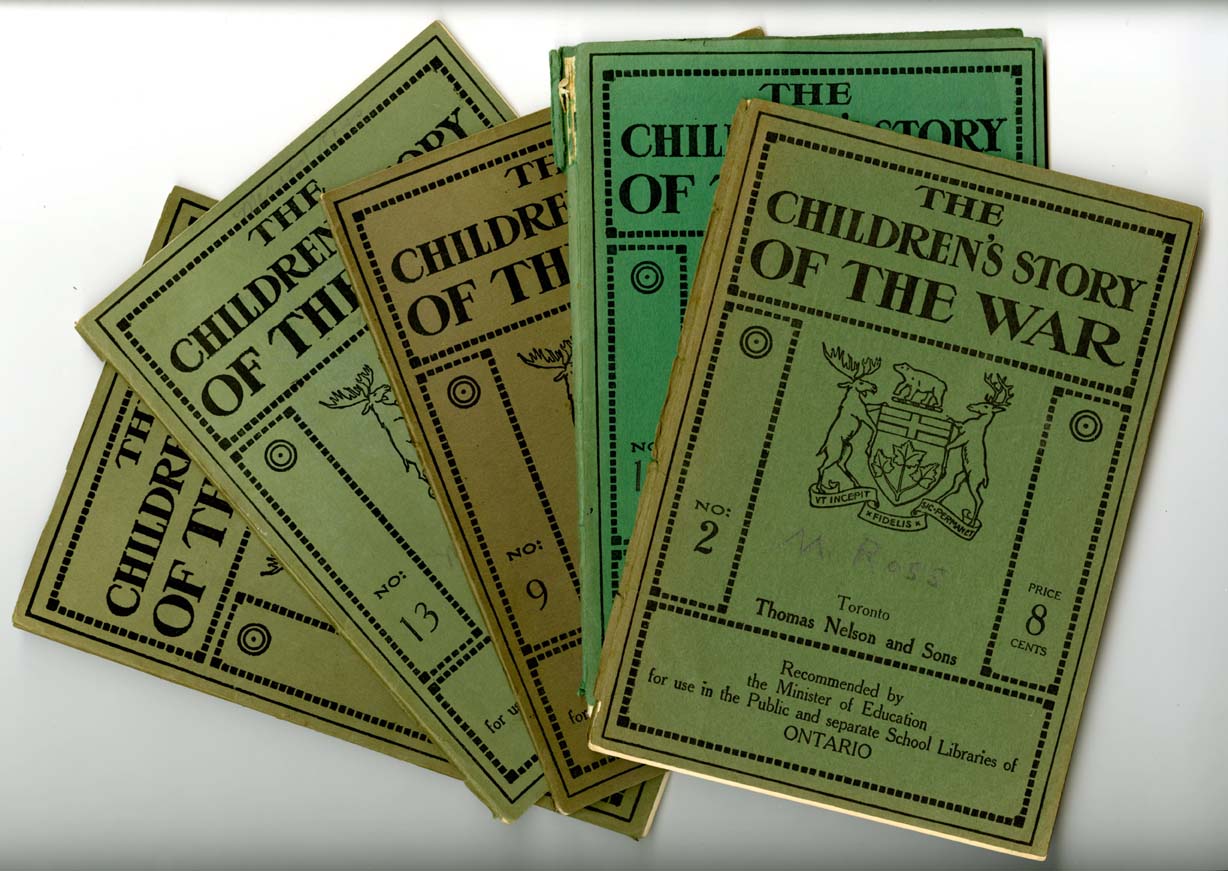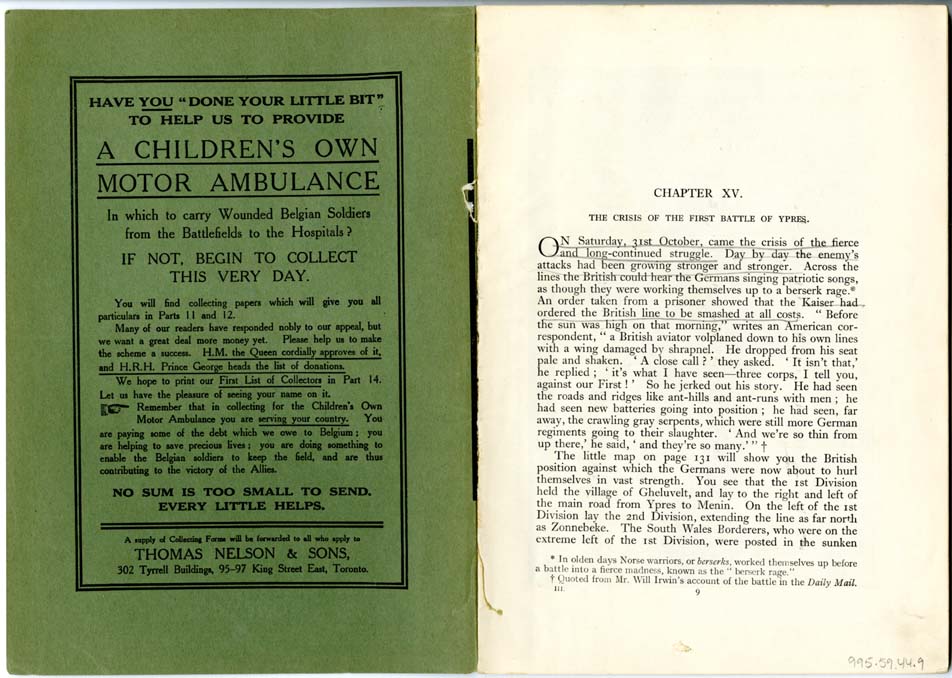The Children's Story of the War is a multi-volume set of books that were used in schools to teach students about the war. These were written and published while the war was happening. In general, the war was glorified to inspire patriotism and the students were taught that the Allies were fighting for liberty and freedom.

From inside The Children's Story of the War No. 13, published in 1917:

YRDSB Museum and Archives collection
Chapter XV.
THE CRISIS OF THE FIRST BATTLE OF YPRES.
ON Saturday, 31st October, came the crisis of the fierce and long-continued struggle. Day by day the enemy’s attacks had been grow1ng stronger and stronger. Across the lines the British could hear the Germans singing patriotic songs, as though they were working themselves up to a berserk rage.*In olden days Norse warriors, or berserks, worked themselves up before a battle into a fierce madness, known as the “ berserk rage." An order taken from a prisoner showed that the Kaiser had ordered the British line to be smashed at all costs. “ Before the sun was high on that morning," writes an American cor- respondent, “ a British aviator volplaned down to his own lines with a wing damaged by shrapnel. He dropped from his seat pale and shaken. ‘ A close call ’ they asked. ‘ It isn’t that,’ he replied; ‘ it’s what I have seen—three corps, I tell you, against our First ! ’ So he jerked out his story. He had seen the roads and ridges like ant—hills and ant—runs with men ; he had seen new batteries going into position; he had seen, far away, the crawling gray serpents, which were still more German regiments going to their slaughter. ‘ And we’re so thin from up there,’ he said, ‘ and they’re so many.’ ”
The little map on page 131 will show you the British position against which the Germans were now about to hurl themselves in vast strength. You see that the 1st Division held the village of Gheluvelt, and lay to the right and left of the main road from Ypres to Menin. On the left of the 1st Division lay the 2nd Division, extending the line as far north as Zonnebeke. The South Wales Borderers, who were on the extreme left of the 1st Division, were posted in the sunken
* In olden days Norse warriors, or berserks, worked themselves up before a battle into a fierce madness, known as the “ berserk rage."
Quoted from Mr. Will Irwin's account of the battle in the Daily Mail. III.